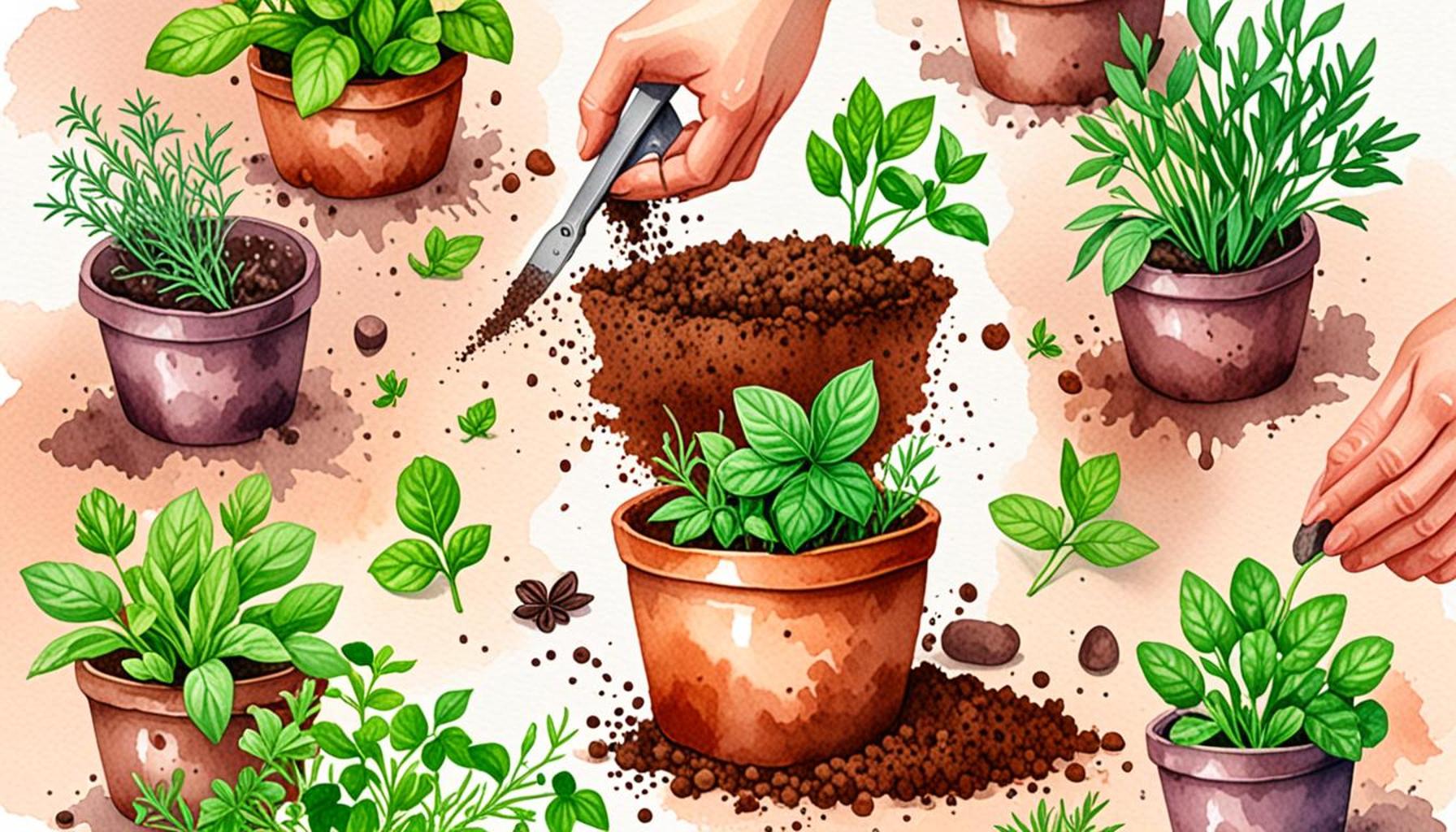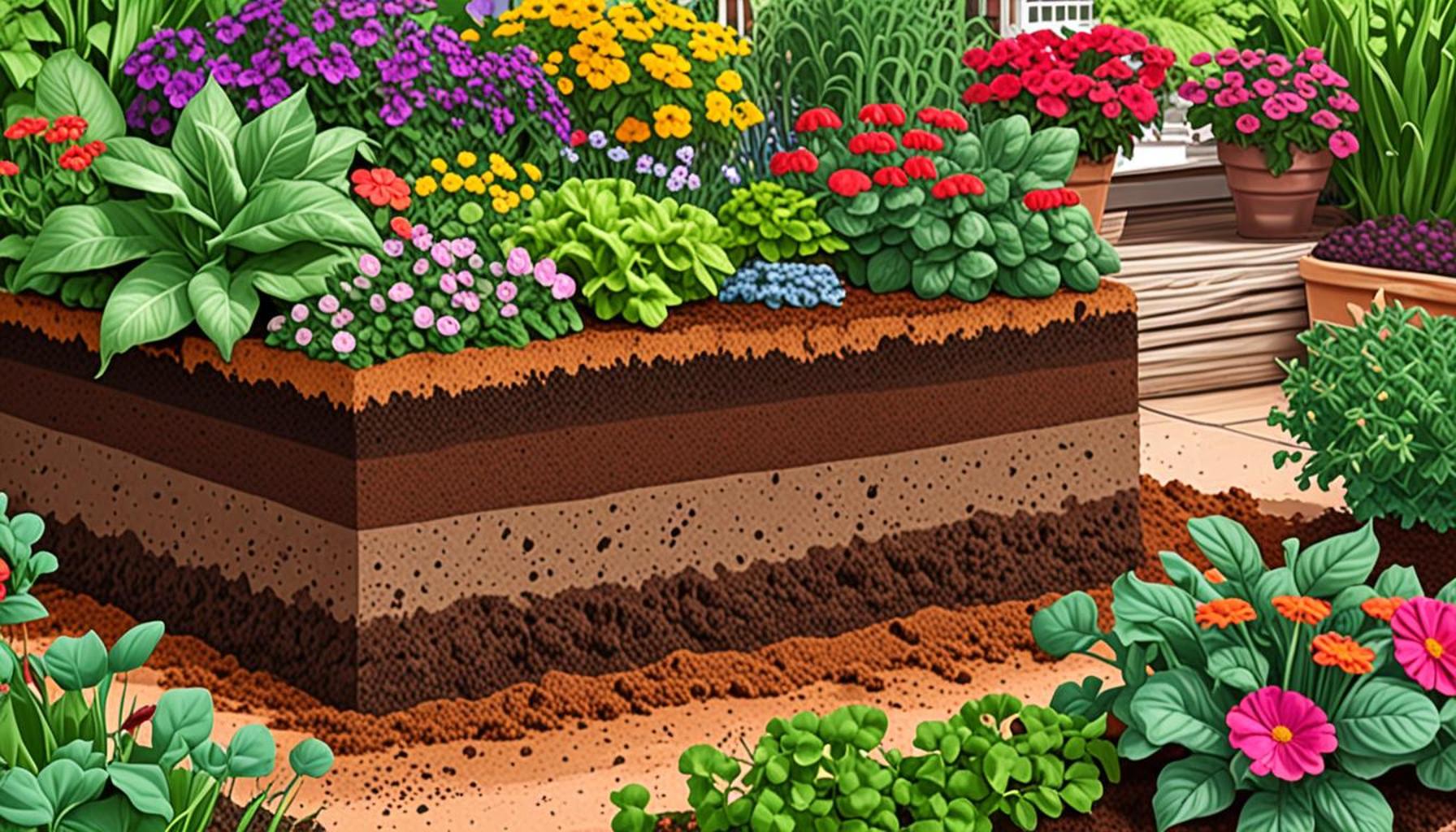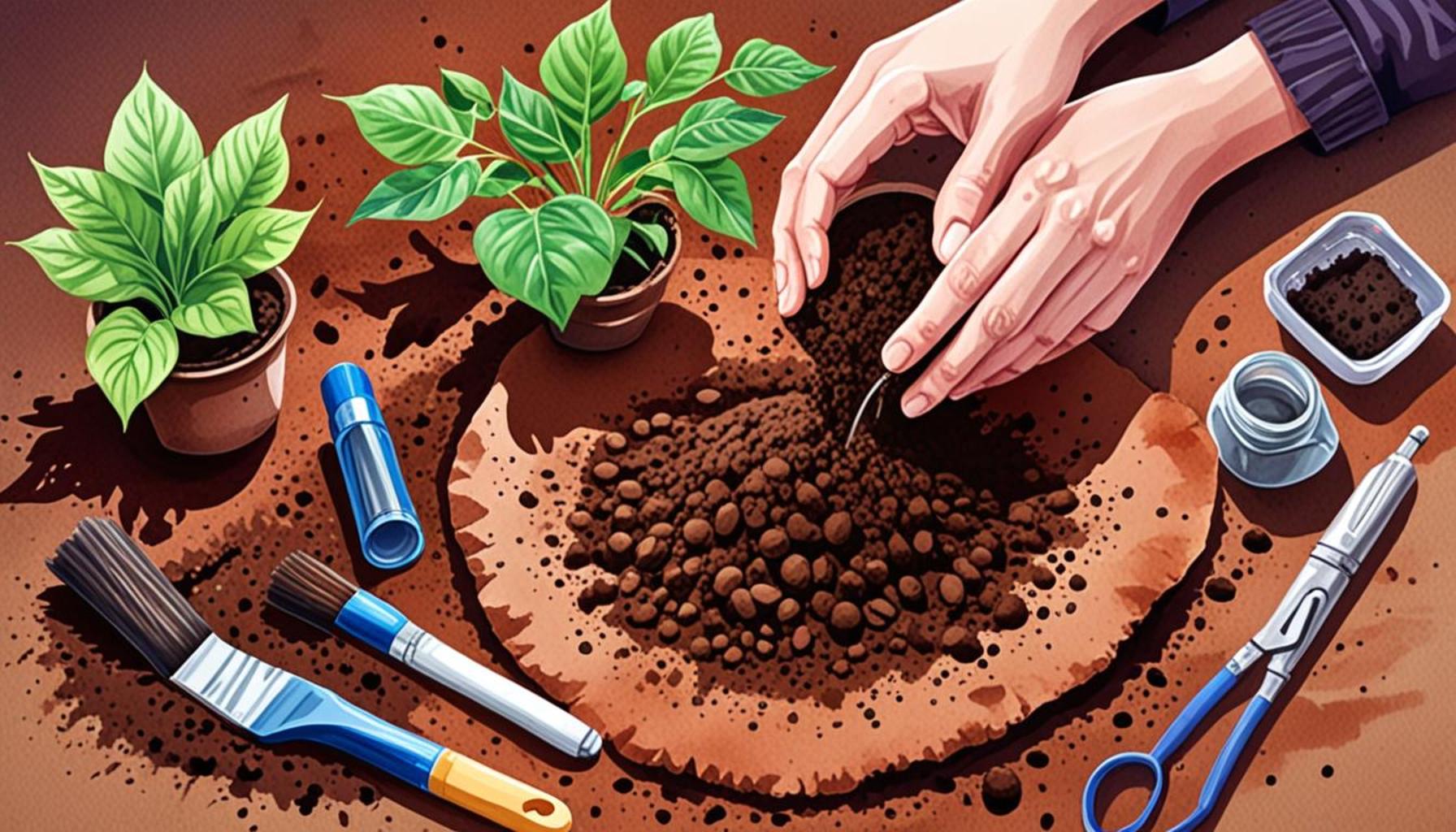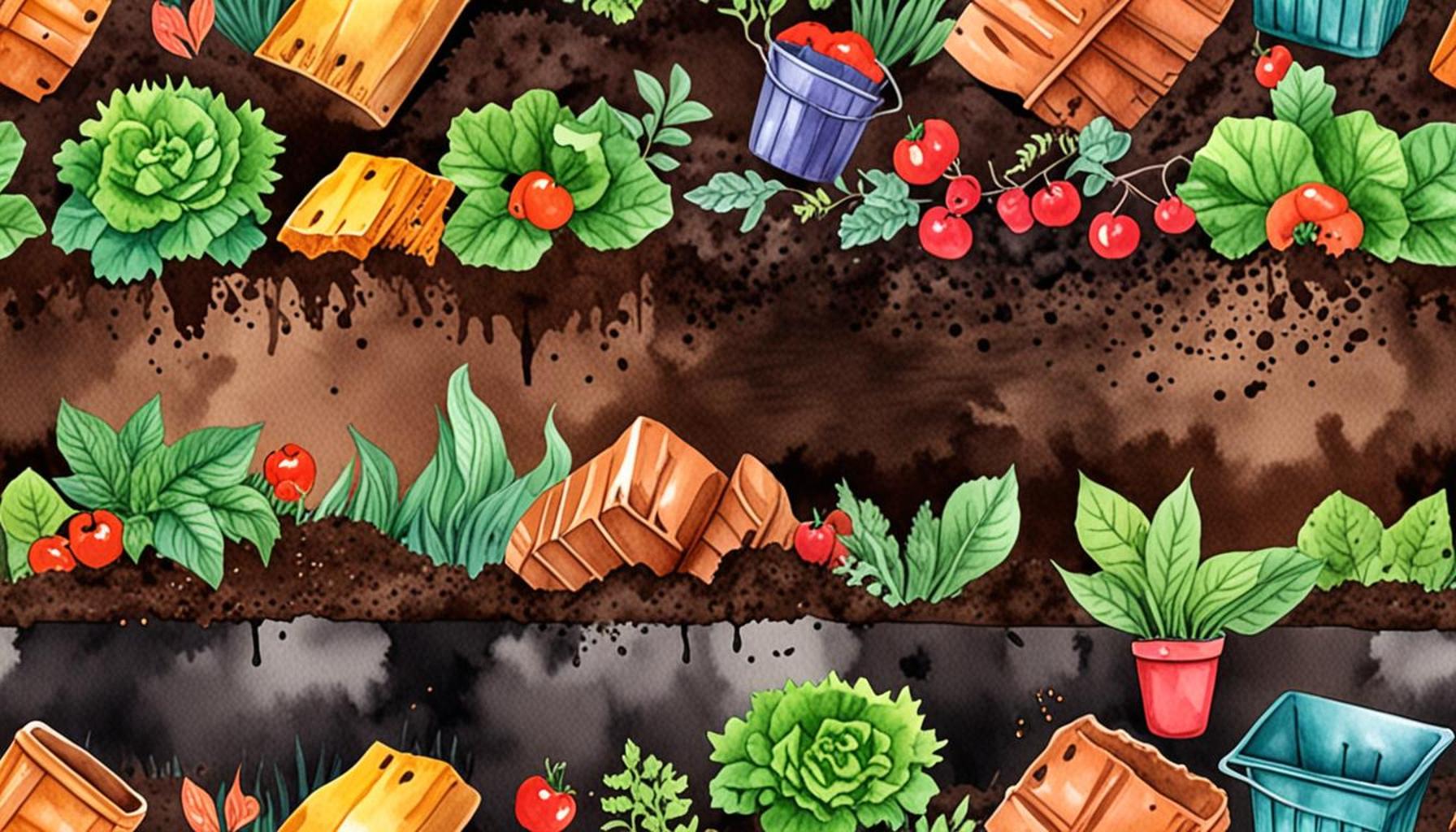Effective Soil Preparation Techniques for Growing Herbs at Home

Understanding the Foundations of Herb Gardening
Growing herbs at home can be a rewarding experience, providing fresh flavors and fragrances right from your garden or windowsill. However, the success of your herb garden largely depends on one critical factor: the soil. Proper soil preparation sets the foundation for healthy plants and bountiful harvests. The right soil not only supports plant growth but also influences the flavor profiles of the herbs you cultivate and their resistance to pests and diseases. Let’s explore the importance of effective soil preparation and the techniques that can elevate your gardening experience.
Soil Testing
Before you can tailor your soil to meet the needs of your herbs, you must first understand what you’re starting with. Soil testing is a crucial step that involves assessing the nutrient levels and pH of your soil. In the United States, soil testing kits are readily available at garden centers or through cooperative extension services that often offer this service for free or at a low cost. Analyzing these elements helps you identify deficiencies, such as a lack of nitrogen for leafy herbs like mint or basil. Additionally, testing the soil’s pH reveals its acidity or alkalinity, which can significantly affect nutrient availability. Most herbs thrive in a slightly acidic to neutral pH (around 6.0-7.0), so adjusting your soil based on these findings is essential for optimal growth.
Amendments
Once you’ve determined your soil’s needs through testing, the next step is to introduce amendments. Organic materials, such as compost, aged manure, or well-rotted leaf mulch, enrich the soil with vital nutrients while improving its structure. For instance, compost not only adds essential nutrients but also enhances soil aeration and moisture retention. A general rule of thumb is to incorporate a 2-3 inch layer of compost into the top six inches of soil. By enriching your soil with these amendments, you’re not just providing food for your herbs; you’re also fostering a healthy ecosystem that encourages beneficial microbes and earthworms—both vital allies in gardening.
Drainage
The importance of drainage cannot be overstated when preparing your soil for herbs. Proper drainage prevents waterlogging, which can lead to root rot—a common ailment among herbs like parsley, cilantro, and thyme. To ensure your soil drains well, consider mixing in coarse sand or perlite, especially if your existing soil is heavy clay. For container gardening, choose pots with adequate drainage holes; using the right soil mix—often a blend of potting soil and drainage material—can further prevent excess moisture. Keeping your herbs in well-draining soil not only promotes healthy root development but also enhances their overall vigor and resilience.
Additionally, understanding the specific requirements of your preferred herbs can guide you in customizing your soil blend. For example, herbs such as basil thrive in rich, well-drained soil, needing more nutrients to support their lush growth and flavor development. In contrast, rosemary prefers lean, sandy conditions that mimic its Mediterranean origins. Tailoring the soil environment to meet the needs of each type of herb is key to fostering an abundance of greenery. As you embark on your herb gardening journey, remember that by mastering soil science, you can create ideal conditions that enhance growth and maximize your garden’s potential.
Investing time and effort into understanding and preparing your soil can transform your home herb garden from merely adequate to exceptional, offering you a continual supply of fresh, fragrant herbs to enhance your culinary adventures.
DISCOVER MORE: Click here to learn how to beautify your small space!
Mastering Soil Structure and Composition
Soil preparation is not merely about adding nutrients; it is an intricate process that requires attention to soil structure and composition. Understanding these elements can significantly improve the productivity of your home herb garden and yield flavorful results. To create an environment where your herbs can flourish, consider the following aspects that make up effective soil preparation:
Soil Structure
The structure of your soil refers to the arrangement of soil particles, which can greatly affect air circulation, water retention, and root growth. Healthy soil typically has a crumbly texture that allows for both drainage and nutrient retention. To enhance soil structure, some techniques you can employ include:
- Tilling: Lightly till your soil to break up compact areas and improve aeration. Remember that excessive tilling can disrupt the natural habitats of beneficial microorganisms.
- Layering: Constructing layers of different materials, such as coarse sand, garden soil, and organic matter, can create a dynamic structure that supports various herb types.
- Cover Crops: Planting cover crops like clover or vetch during off-seasons can naturally enrich the soil, improve texture, and prevent erosion.
Soil Texture
Alongside structure, texture is another crucial element to consider. Soil texture is determined by the proportions of sand, silt, and clay particles within it. Ideally, a well-balanced soil consists of a mixture of these components, typically favoring a loamy texture for optimal drainage and nutrient availability. To assess and adjust your soil texture, follow these strategies:
- Sand Addition: If your soil is predominantly clay, incorporating sand can improve drainage. This is particularly essential for herbs that require well-aerated conditions.
- Organic Matter: Consistently adding compost or well-decomposed leaf matter can enhance soil texture and nutrient content, making it more suitable for herb growth.
- Mulching: Applying organic mulch helps retain moisture, suppress weeds, and gradually adds nutrients back into the soil as it decomposes.
Moreover, continuous soil maintenance and monitoring will allow you to identify changes over time. As seasonal shifts occur, your soil’s needs may evolve, necessitating reassessment. By understanding the dynamics of your soil’s structure and texture, you can create a customized soil environment that aligns with the specific demands of the herbs you plan to grow.
Ultimately, the journey of enhancing your soil begins with knowledge but benefits from hands-on experience. Successful herb gardening hinges on the ability to adapt and fine-tune your soil preparation techniques, ensuring that your plants will not only survive but thrive in the richness you provide.
Effective Soil Preparation Techniques for Growing Herbs at Home
Creating a successful herb garden at home begins with effective soil preparation. The quality of soil significantly influences the growth, flavor, and yield of the herbs you intend to grow. Here are several techniques that can enhance soil health and support your herbs in reaching their full potential.
| Soil Testing | Understanding Nutritional Needs |
|---|---|
| Conduct soil tests | Helps determine pH levels and nutrient deficiencies. |
| Adjust nutrient balance | Allows for precise amendments like compost or fertilizer. |
| Incorporate organic matter | Improves soil structure and moisture retention. |
| Practice crop rotation | Prevents soil depletion and pests. |
By understanding the specific needs of your herbs through soil testing, you gain insight into their nutritional requirements. Additionally, incorporating organic matter into your soil fosters a vibrant ecosystem for plant growth, ensuring herbs thrive. Crop rotation not only contributes to enhancing soil fertility but also reduces the risk of disease and pests, leading to a healthier garden overall. Each of these techniques contributes to creating a robust foundation for your herb garden, paving the way for bountiful harvests.
With well-prepared soil, your herbs will not only grow vigorously but also possess enhanced flavors and aromas. Shifting your focus to soil health is the first step in cultivating a flourishing herb garden right in your home.
DISCOVER MORE: Click here to learn how to assess your plants’ water needs
Enhancing Soil Fertility through Organic Amendments
Once you’ve established a solid foundation with the right soil structure and texture, the next step in effective soil preparation is enhancing soil fertility. Fertile soil is the backbone of a successful herb garden, providing essential nutrients that plants need to thrive. Here, we will discuss several organic amendments and practices that can boost your soil’s nutrient profile and help your herbs grow stronger and healthier.
Compost as the Cornerstone
Compost should be viewed as the cornerstone of any garden, especially when preparing soil for herbs. This organic material enriches the soil by adding a wide range of nutrients, enhancing water retention, and promoting beneficial microbial activity. Not only does it serve as a slow-release fertilizer, but it also improves soil structure over time. Here are a few considerations for using compost effectively:
- Make Your Own: If you have space, consider creating your own compost bin. Kitchen scraps like vegetable peels, lawn clippings, and dried leaves transform into a rich, dark compost that is free from synthetic chemicals.
- Store-Bought Options: If homemade compost isn’t feasible, there are many quality ready-made compost options available. Look for organic certifications to ensure that you provide the best nutrition for your herbs.
- Application Practices: Spread a layer of compost on the soil surface or mix it directly into the top few inches before planting. Regular additions each growing season can maintain soil fertility.
The Power of Mulching
Mulching is another effective soil preparation technique that not only helps retain moisture but also enriches the soil as it breaks down. Organic mulches such as straw, wood chips, or bark provide a protective barrier against weeds and temperature fluctuations. As these materials decompose, they release nutrients back into the soil. Here are some practical tips for mulching:
- Choose Wisely: Select organically sourced materials free from chemical treatments. This is crucial for maintaining a healthy growing environment for your herbs.
- Maintain Thickness: A thickness of 2-3 inches is typically recommended to maximize the benefits of moisture retention and weed suppression.
- Regular Refreshing: As mulch decomposes, it can lose its effectiveness. Regularly check your mulch layer and replenish it through the growing season.
Natural Fertilizers
Natural fertilizers such as bone meal, blood meal, and fish emulsion can play an important role in soil fertility. These organic options provide essential nutrients like nitrogen, phosphorus, and potassium, which are vital for robust herb growth. When exploring natural fertilizers, consider the following:
- Balanced Nutrition: Ensure a balanced approach by selecting a combination of fertilizers. For instance, fish emulsions are often high in nitrogen, while bone meal is rich in phosphorus.
- Timing and Application: Apply natural fertilizers before planting or during the early stages of growth when nutrient demands are highest. Incorporate them into the soil to prevent nutrient runoff and ensure absorption.
By integrating these organic practices into your soil preparation routine, you can foster a nutrient-dense environment that will facilitate the growth of vibrant and flavorful herbs. With a commitment to understanding and enhancing soil fertility, your home herb garden can become a thriving oasis of fresh flavors and aromas right at your fingertips.
DIVE DEEPER: Click here to learn about crop rotation’s role in pest management
Conclusion: Cultivating Success Through Soil Preparation
In conclusion, effective soil preparation techniques are essential for thriving herb gardens at home. By meticulously managing soil structure, enhancing fertility with organic amendments, and employing practical practices such as composting, mulching, and natural fertilizers, you lay a solid foundation for your herbs to flourish. These techniques not only promote robust growth but also ensure that your herbs are flavorful and aromatic, enriching your culinary adventures.
As you dive deeper into gardening, remember that the health of your plants begins beneath the surface. Factors such as micro-nutrient balance, moisture levels, and the presence of beneficial organisms all contribute to a healthy growing environment. Consider experimenting with different organic materials and methods to find what works best for your unique soil composition and climate.
Finally, sustainable practices in soil preparation not only benefit your garden but also contribute to a healthier ecosystem. By choosing organic amendments and minimizing synthetic inputs, you promote biodiversity and protect the environment. Investing time and effort into these preparation techniques will yield long-term benefits, not just for your herb garden but for the broader community.
So gear up, envision the possibilities, and embark on your journey of herb gardening. With the right knowledge and preparation, your home can transform into a vibrant oasis of fresh herbs that can elevate your dishes and inspire your cooking.


